Stringing and Mounting the Keyboard and Action
Stringing Is Done by Hand, One String at a Time
The soundboard has been glued in the piano body, which also houses the frame. Approximately 230 steel strings are strung on the frame. The total tension on all strings measures around 20 tons, and must be supported by a strong metal frame.
The strings come in about 20 different diameters or gauges corresponding to ranges of notes of the keyboard. The strings are individually strung for the tenor, treble, and bass ranges.
Adjusting the Key Height and Key Drop
The keyboard is then mounted onto the main body of the piano by sliding it onto the key bed. After its front, back, and lateral position are adjusted, the action is mounted on the keyframe. This is the first time that the keyboard and the action have been assembled into a single unit.
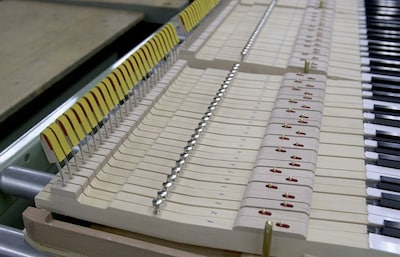

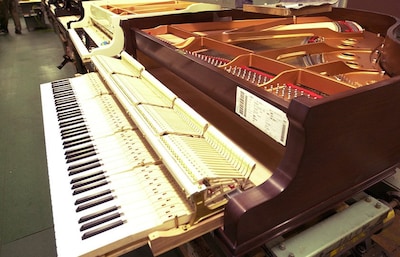
After making a series of adjustments to the movement, the height of the keys is measured using a laser-equipped measuring instrument. The key height is adjusted using thin round paper shims (punchings) that come in various thicknesses. A computer calculates the kind and the number of paper shims required to set the black keys and white keys at their correct height.

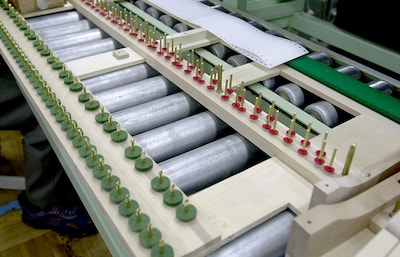

Following the height adjustment, the key drop is adjusted. Key drop is measured after the keyboard has been exercised by an automatic key pressing machine.
The automatic key pressing machine literally depresses the keys automatically. Since the action incorporates a variety of articulated parts, a running-in process is performed using the automatic key press machine to exercise the action and "break in" these components. Afterwards, a key drop measuring instrument is used to measure the drop as each key is depressed, and it indicates the type and number of paper shims required to make all keys have the same drop. Nevertheless, even though a computer has generated instructions to insert shims, the process is not complete until a human has played the keyboard to assess how it feels with his/her own hands. Therefore, final key adjustments are done using the eyes and hands of a person that has a keen sense of sight and touch.
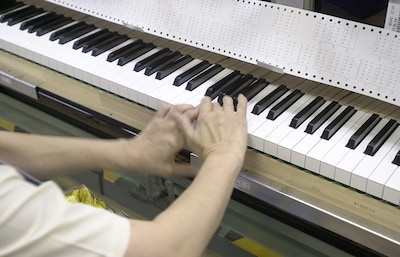
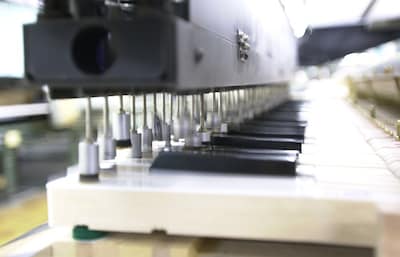
Musical Instrument Guide : Piano Contents
Origins
Structure
How to Play
How the Instrument is Made
Choosing an Instrument
Care and Maintenance
Trivia
- The White Keys and Black Keys Were Reversed on Pianos in Mozart's Day
- Did Mozart's Piano Have a Pedal-Board?
- Piano with Automatic Accompaniment System in Beethoven's Day
- The Pianos Beloved by the Great Master, Sviatoslav Richter
- The Optimal Material for Piano Frames Is Also Ideal for Motorcycle Engines
- The Piano Soundboard Is a Board that Also Stops Vibrations
- Why Can't There Be More Than 88 Keys on a Piano?
- Why a Grand Piano Keyboard Feels Heavier Than an Upright Keyboard?


